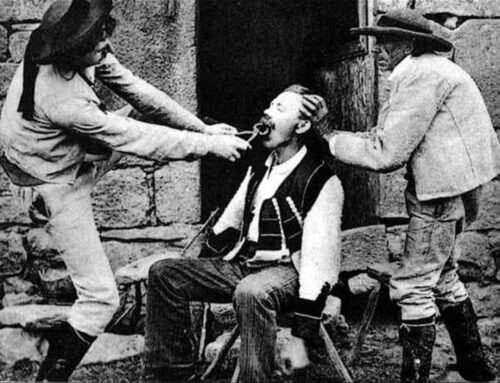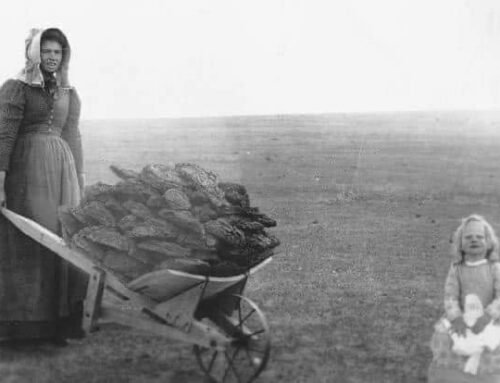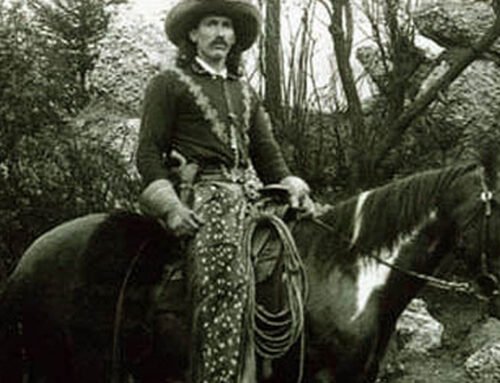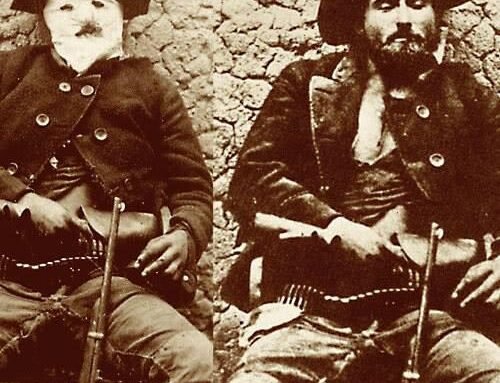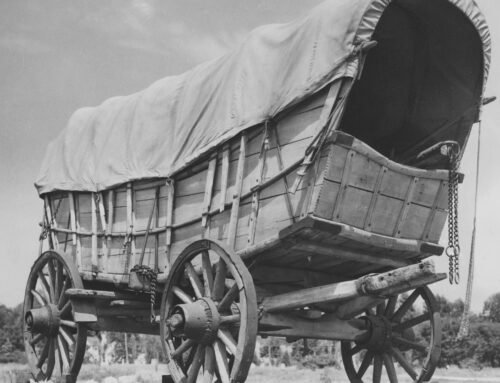John Wesley Hardin
By western author Nick Brumby
“They say I killed six or seven men for snoring. Well, it ain’t true. I only killed one man for snoring.”
—John Wesley Hardin, Texas’ most deadly gunman
 He gunned down lawmen, former slaves, Federal troops, cowboys, Mexican herders and drunken gamblers. Yet for all his killings, enemies and showdowns, John Wesley Hardin’s most dangerous foe was himself.
He gunned down lawmen, former slaves, Federal troops, cowboys, Mexican herders and drunken gamblers. Yet for all his killings, enemies and showdowns, John Wesley Hardin’s most dangerous foe was himself.
Hardin was a cattle hand, a drifter, a gambler, and a lawyer. However, he is best known as a gunfighter who spent his life gunslinging, dueling, gambling, and drinking, and still found the time to kill dozens of people. How many? Anything from 27 (confirmed) to 40-something (according to Hardin himself). However, nobody really knows quite how many,
Born in 1853, Hardin was named after John Wesley, the founder of the Methodist church. His preacher father intended for him to become a preacher, however his true nature soon shone through. He often got into trouble with the law from an early age. In 1862, aged nine, Hardin tried to run off and join the Confederate army.
Hardin’s violent career started in 1867 with a schoolyard squabble in which he stabbed another youth. At fifteen, in Polk County, he shot and killed an ex-slave, claiming he did so in self-defense.
Hardin fled to his brother’s house, where in the fall of 1868 he claimed to have killed three Union soldiers who sought to arrest him. Within a year, he killed another soldier at Richard Bottom.
 In Hardin’s own words: “I waylaid them, as I had no mercy on men whom I knew only wanted to get my body to torture and kill. It was war to the knife for me, and I brought it on by opening the fight with a double-barreled shotgun and ended it with a cap and ball six-shooter. Thus it was by the fall of 1868 I had killed four men and was myself wounded in the arm.”
In Hardin’s own words: “I waylaid them, as I had no mercy on men whom I knew only wanted to get my body to torture and kill. It was war to the knife for me, and I brought it on by opening the fight with a double-barreled shotgun and ended it with a cap and ball six-shooter. Thus it was by the fall of 1868 I had killed four men and was myself wounded in the arm.”
During his life he outgunned and killed at least eight Union soldiers and four black policemen pursuing him on various murder charges.
He was known for his quick draw and his willingness to shoot first and ask questions later. There was probably no authentic Western character more proficient with their chosen handguns nor more willing to put them to deadly use than Hardin. His lightning draw and expert marksmanship were witnessed by many and officially documented. Many local graveyards had Hardin to thank for new long-term residents.
Part of his secret was the unusual way in which he carried his guns. According to reports, Hardin carried his pistols in shoulder holsters instead of at the waist, with the butts facing inward.
When pulling his pistols, Hardin would cross-draw by plunging his hands into his vest, pulling the weapons out. Hardin claimed this was the fastest way to draw, and he practiced every day. This design is often credited as his own invention.
 Hardin cut an unusual figure as a gunslinger. He was a handsome, gentlemanly man who considered himself a pillar of society, always maintaining that he never killed anyone who did not need killing and that he always shot to save his own life. Many who knew him or his family regarded him as a man more sinned against than a sinner.
Hardin cut an unusual figure as a gunslinger. He was a handsome, gentlemanly man who considered himself a pillar of society, always maintaining that he never killed anyone who did not need killing and that he always shot to save his own life. Many who knew him or his family regarded him as a man more sinned against than a sinner.
In 1871 Hardin needed to get out of Texas and signed up as a cowboy up the Chisholm Trail. True to form, the combination of his white-hot temper, a quick draw and the prodigious amounts of alcohol he regularly imbibed resulted in his killing at least seven men along the way, and another three in Abilene, Kansas.
In one memorable incident, Hardin was staying at a hotel in Abilene, Kansas when a man named Charles Couger slept in the adjoining room. The man was snoring loudly, so Hardin yelled for him to roll over. When the snoring continued, Hardin shot through the wall several times to startle him awake. When sound stopped altogether, Hardin realized he had shot and killed the man—for snoring.
He returned to Texas, got married and settled down to raise a family but soon reverted to his old ways, adding four more murders to his total, before being captured by a county sheriff. Although jailed, he soon broke out and was on the run again.
 Hardin’s place in history was assured in 1874, on his 21st birthday. Celebrating a big win at the horse races in Comanche, Texas, Hardin got incredibly drunk and drew the attention of deputy sheriff Charles Webb. The two got into a duel, and Hardin won. Local townsfolk responded by lynching Hardin’s brother and cousins, forcing him to go on the run and a $4,000 bounty to be placed on his head.
Hardin’s place in history was assured in 1874, on his 21st birthday. Celebrating a big win at the horse races in Comanche, Texas, Hardin got incredibly drunk and drew the attention of deputy sheriff Charles Webb. The two got into a duel, and Hardin won. Local townsfolk responded by lynching Hardin’s brother and cousins, forcing him to go on the run and a $4,000 bounty to be placed on his head.
In 1877 Hardin’s luck changed. Rangers and local authorities caught him on a train in Florida. He attempted to draw a Colt .44 but it got caught up in his suspenders. The officers knocked Hardin unconscious. Hardin was sentenced to serve 25 years in Huntsville Prison.
During his prison term he repeatedly tried to escape, before settling down, reading theological books, becoming superintendent of the prison Sunday school, and studying law. He got out in 1894 after 16 years behind bars and was soon admitted to the bar as a lawyer.
This new career direction for Hardin has been described as perhaps the most remarkable example of someone managing to pass the character and fitness portion of the bar admission process. A pardon from the Texas Governor of the time helped smooth the way.
 Despite efforts to lead a decent life, he was soon in trouble. In 1895 he went to El Paso and took the wife of one of his clients, cattle thief Martin Mroz, as his lover. Mroz was killed by law officials with Hardin rumored to have hired the killers.
Despite efforts to lead a decent life, he was soon in trouble. In 1895 he went to El Paso and took the wife of one of his clients, cattle thief Martin Mroz, as his lover. Mroz was killed by law officials with Hardin rumored to have hired the killers.
Hardin met his end in suitably murky circumstances. He had a public argument with Constable (and well-known gunman) John Selman, Sr, and the two men exchanged heated words.
That night, Hardin went to the Acme Saloon, where he began playing dice. Shortly before midnight, Selman Sr. walked into the saloon and shot Hardin in the head, killing him instantly. As Hardin lay on the floor, Selman fired three more shots into him.
Like many of the legendary figures of the old west, Hardin had met a violent end from someone who hadn’t the courage to face him man-to-man. It was said that in his last moments, even though slowed own by age and without the advantage of his youthful quick reactions, Hardin still managed to reach for his pistol before he died.
Court records show that Hardin carried a Colt “Lightning” revolver at the time of his death. The Colt, with a .38-caliber 2+1⁄2″ barrel, is nickel-plated, with blued hammer, trigger, and screws. It features mother-of-pearl grips, and the back-strap is hand-engraved “J.B.M. TO J.W.H.”. This gun and its holster were once sold at auction for $168,000.
 Some of the wilder stories told about Hardin’s life:
Some of the wilder stories told about Hardin’s life:
- Hardin claimed he ambushed Abilene lawman Tom Carson and two other deputies there. According to him, he did not kill them but forced them to remove all their clothing and walk back to town
Hardin claimed that in July 1874, he drove off 17 Texas Rangers who had been trailing him, and killed one of them. - In Pisgah, Texas Hardin claimed he shot a man’s eye out to win a bottle of whiskey in a bet.
- Hardin made the claim to have outdrawn “Wild Bill” Hickok. No contemporary newspaper accounts confirm this, but another report suggests that it was Hickok who made Hardin put up his guns.
Hardin is buried at the Concordia Cemetery in El Paso, Texas. Ironically, Hardin’s killer – John Selman is buried just a few feet away. His autobiography was published posthumously in 1925.
In the end, he died as he had lived–by the gun, a legend of the Old West and an icon of American folklore.

About Nick Brumby
I like a good story. And of all stories, I love westerns the most.
As a kid, I spent far too many afternoons re-watching Clint Eastwood spaghetti westerns, picking up ‘Shane’ for just one more read, or saddling up beside Ben Cartwright when ‘Bonanza’ was on TV each afternoon.
I’m a former journalist and I love horses, dogs, and the occasional bourbon whiskey. I live with my wife, daughter and our ever-slumbering hound in a 1800’s-era gold mining town – our house is right on top of the last working gold mine in the area. There may not be much gold left, but there’s history wherever you look.
I hope you enjoy my westerns as much as I enjoyed writing them!
Happy trails,
Nick






















